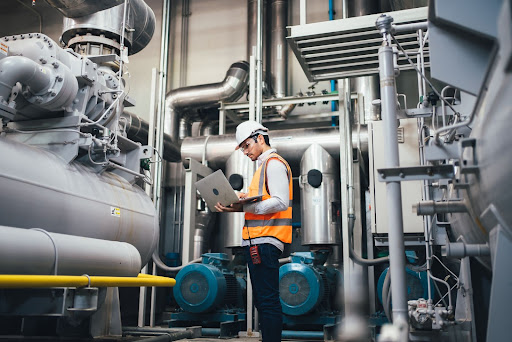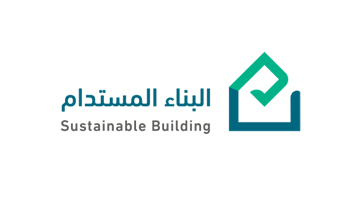
Energy efficiency is essential for sustainable building management, offering significant cost savings and environmental benefits. The ASHRAE Energy Audit provides a comprehensive framework to assess and enhance the energy performance of buildings. This article explores the three levels of ASHRAE Energy Audits, each progressively more detailed, to help building owners and managers optimize their energy use effectively.
The Article Covers Audit Levels involved in Ashare Energy Auditing Process:
Imagine a scenario where our residencies, workplaces, and industries operate as optimized energy centers with maximum efficiency and minimum wastage.It may appear impossible but attaining it is not beyond our reach. The key factor involves getting a better understanding on our energy consumption patterns, detecting the inefficiencies, and uncovering the possibilities for conservation and cost savings. This is exactly where the concept of energy audit plays a significant role.This article will let you explore the fascinating world of energy audits.

What is Energy Auditing?
Energy auditing is a process which involves a systematic evaluation and analysis of energy usage in buildings, facilities. It involves assessing energy consumption, operational practices, equipment efficiency, and building characteristics to identify energy wastage and potential areas for energy efficiency enhancements.

Why is Energy Auditing important?
Carrying out an energy audit is important in the following ways
- Identify the areas of energy wastage and provide recommendations to reduce the energy consumption and improve the cost savings.
- Analyses the energy usage patterns and equipment efficiency an provides an idea to upgrade the equipment’s or modify the operation plan.
- Analyses the condition and performance of the various systems in the building, which allows us toidentify the specific issue and provide targeted maintenance or replacements.
- Energy audits offer insights into the financial feasibility and return on investment (ROI) of energy-saving measures.
- It acts as a baseline for long term energy management strategies
What are the levels in Energy Auditing?
An Energy auditing process can generally be classified into three major levels, each serving a unique purpose in evaluating energy consumption and identifying opportunities for improvement. In addition, there is a preliminary level that acts as a base for the three-level.
- Preliminary Energy Use Analysis (PEA).
- Level – 1: Site Walkthrough.
- Level – 2: Energy performance evaluation.
- Level – 3: Detailed analysis of major capital upgrades.

In this article we will explore in detail about the levels of energy audit and examine its contribution to a thorough assessment.
Preliminary Energy Use Analysis (PEA).
The Preliminary Energy Use Analysis (PEA) is a process that involves the evaluation of the energy usage pattern of the building or the facility by analyzing the energy consumption data, and utility bills (It is essential to collect information on energy consumption, power demand, and expenses for the previous 12 months minimum). The Analyst then calculates the Energy Utilization Index (EUI) for the buildingand compares it with the EUI similar structures to assess its energy efficiency. The primary objective of conducting a Preliminary Energy-Use Analysis (PEA) is to gain an initial understanding of energy utilization within a building and identify potential opportunities for energy saving.

Outcome of Preliminary Energy Use Analysis (PEA):
- Energy usage breakdown to identify which areas contribute the most to energy consumption.
- Energy benchmarking to compare energy performance against similar buildings.
- Initial low-cost and high-impact measures.
Level-1 Site Walkthrough
The level 1 site walkthrough analysis is applicable to identify the general energy efficiency improvements in a building. Initially Preliminary Energy Use Analysis (PEA) is carried out in order to analyze the buildings energy cost and efficiency. A certified energy auditor will conduct a site walkthrough of the facility to learn about its construction, equipment, operation, and maintenance. The auditor will then interview the owner and occupants of the facility to learn about any existing problems with the operation or maintenance of the facility. The auditor will use the information gathered from the interviews to identify potential energy efficiency improvements in the facility.
The auditor will find the possible opportunities to improve the energy efficiency of the facility through cost-effective or no cost changes or by changing the existing operation and maintenance procedures after completing the above procedures. The auditor will further Identify potential capital improvements that could be made to the facility, and provide an initial estimate of the costs and savings associated with each improvement.

Purpose of the Site visit:
- Gaining knowledge about building energy usage, operational procedures, and occupant behavior.
- Creating initial Energy Efficiency Measures.
- Examine the primary energy consuming systems and their process.
- Evaluate the performance efficiency of the building’s systems, which encompass HVAC, lighting, and appliances.
Outcomes of a Level-1 Audit:
- EUI of the facility and its comparison with the EUI of the similar buildings. The source and size of the reference buildings should be added for reference.
- A summary of the existing problems with the operation or maintenance of the facility identified during the site walkthrough.
- A summary of Low cost or No cost changes and their estimated changes.
- A list of potential capital improvements that could be made to the facility, along with an initial estimation of the costs and savings.
Who can go for a level 1 energy audit?
- Small to Medium size buildings like small offices, small industrial buildings, residential houses etc., where the energy systems are simple.
- If you want to gain a preliminary understanding of the building’s energy performance or get a quick energy assessment done for a building.
- If you have limited financial resources and time – Level-1 audits are cost efficient and less time consuming when compared to the other levels.
Level-2 Energy performance evaluation.
The level 2 energy involves detailed assessment of a building’s energy consumption, efficiency and area of improvement when compared to the level 1 audit. A detailed analysis is carried out to get a deeper understanding of energy usage patterns, energy saving opportunities and their cost. The procedure of the Level 2 energy audit is as mentioned below.
- Detailed data will be collected about the building like electricity bills, occupancy pattern, historical energy consumption data and equipment specification.
- Measurements would be taken on site to determine the airflow rates, temperature, lux level, leakage other parameters to identify the areas of energy waste.
- The collected data will be analyzed for better understanding of the usage patterns and area of high energy requirements.
- Upon analyzing the data all possible energy saving opportunities will be evaluated. The energy saving opportunities may include improving the insulation, upgrading or replacement of equipment’s.
- A cost benefit analysis will be conducted for the energy saving opportunities to estimate the implementation cost and their respective payback period.

Outcomes of a Level-2 Audit:
- EUI of the facility and its comparison with the EUI of the similar buildings. The source and size of the reference buildings should be added for reference.
- A summary of Low cost or No cost changes and their estimated changes.
- The Energy audit report will have the recommended energy saving measures prioritized in order of importance.
- Detailed report with major findings, possible energy saving opportunities, implementation cost, payback period and implementation plan.
Who can go for a level 2 energy audit?
- Medium to Large size buildings like offices, hotels, hospitals etc., where the energy systems may be a bit complex.
- If you want to gain a detailed understanding of the building’s energy performance.
- Buildings with higher energy consumption & Buildings to comply with energy standards and codes.
- The cost for a Level 2 energy audit is generally higher than the Level 1 audit
Level-3 Detailed analysis of major capital upgrades.
A Level 3 energy audit, also known as a investment-grade audit, is the most detailed and thorough energy audit. It involves a thorough analysis of a building’s energy performance, including detailed engineering analysis, financial analysis, and investment-grade recommendations. The Level 3 energy audit will provide highly accurate estimation of energy savings and associated costs, making it more suitable for making decisions.
- Extensive data about the building’s energy consumption, including utility bills, equipment specifications, occupancy patterns, equipment’s operation and maintenance records.
- On-site measurements and monitoring will be conducted to obtain accurate information on energy usage patterns and equipment performance. Collected data will be analyzed to identify energy-saving opportunities and areas of improvement
- Detailed engineering analysis will be performed to evaluate the energy performance of various systems within the building. This includes analyzing the efficiency of HVAC systems, lighting systems, building envelope, controls, and other energy-consuming components.
- Calculations, modeling, and simulations will be used to assess the potential impact of energy-saving measures.
- Thorough financial analysis will be conducted for the proposed energy-saving measures. This will include the cost evaluation and benefits associated with each measure, estimating energy savings, calculating payback periods, and return on investment (ROI)
- Based on the engineering and financial analysis,investment-grade recommendations will be developed for energy-saving measures.

Outcomes of a Level-3 Audit:
- Prepare a comprehensive report that summarizes the findings, analysis, and recommendations of the Level 3 energy audit.
- The report will include a detailed description of the current energy performance, identified energy-saving opportunities, financial analysis results, and a prioritized implementation plan.
- Buildings with higher energy consumption & Buildings to comply with energy standards and codes.
- Detailed and specific recommendations, outlining the proposed equipment upgrades, retrofits, operational changes, and energy management strategies.
- Provide accurate estimates of energy savings, implementation costs, and performance improvements associated with each recommendation
- The audit findings will be presented to the building owner, supporting the decision-making process and facilitating the approval and implementation of the recommended energy efficiency measures.
Who can go for a level 3 energy audit?
- Large Industrial facilities, manufacturing plants, multiuse buildings etc., with complicated energy systems and high energy consumption.
- If you want to gain a detailed understanding of the building’s energy performance.
- The cost for a Level 3 energy audit is considerably higher due to the significant level of detail and expertise.
- Building pursuing green building certifications such as LEED (Leadership in Energy and Environmental Design) or BREEAM (Building Research Establishment Environmental Assessment Method).
Conclusion:
In conclusion, the Level 1 energy audit serves as an essential starting point for understanding a building’s energy usage, identifying preliminary energy-saving opportunities and sets the stage for more detailed audits and effective energy improvements. However, for a deeper analysis energy-saving potential, a more detailed analysis can be undertaken in Level 2 and Level 3 energy audits.
Level 2 audit involves a very detailed on-site inspections, data collection, and an in-depth assessment of energy-consuming systems to provide a deeper understanding of the building’s energy performance. Level 3 energy audit steps beyond, incorporating advanced technologies and simulations to model potential energy-saving scenarios.
"Energy efficiency is the golden key that unlocks the door to a sustainable and prosperous world."
Author
Meenakshi Sundaram
A Mechanical engineer with over 2.5+ years in the AEC industry, Meenakshi Sundaram serves as Project Coordinator for Energy and Acoustics at Conserve. Specializing in enhancing acoustic performance and optimizing energy management, he oversees projects encompassing Acoustic design, validation & testing, and energy audits, ensuring effective execution and performance.


